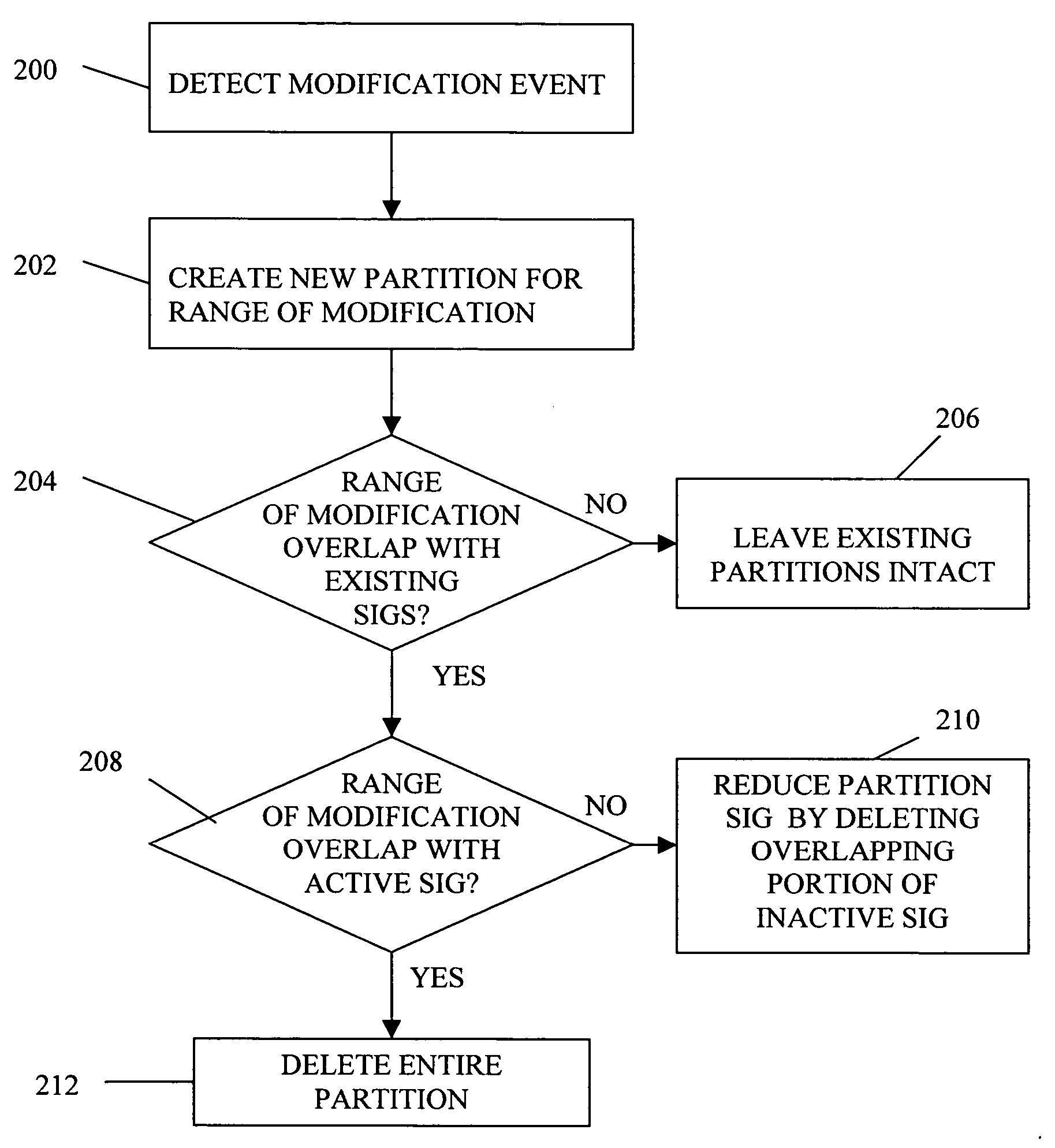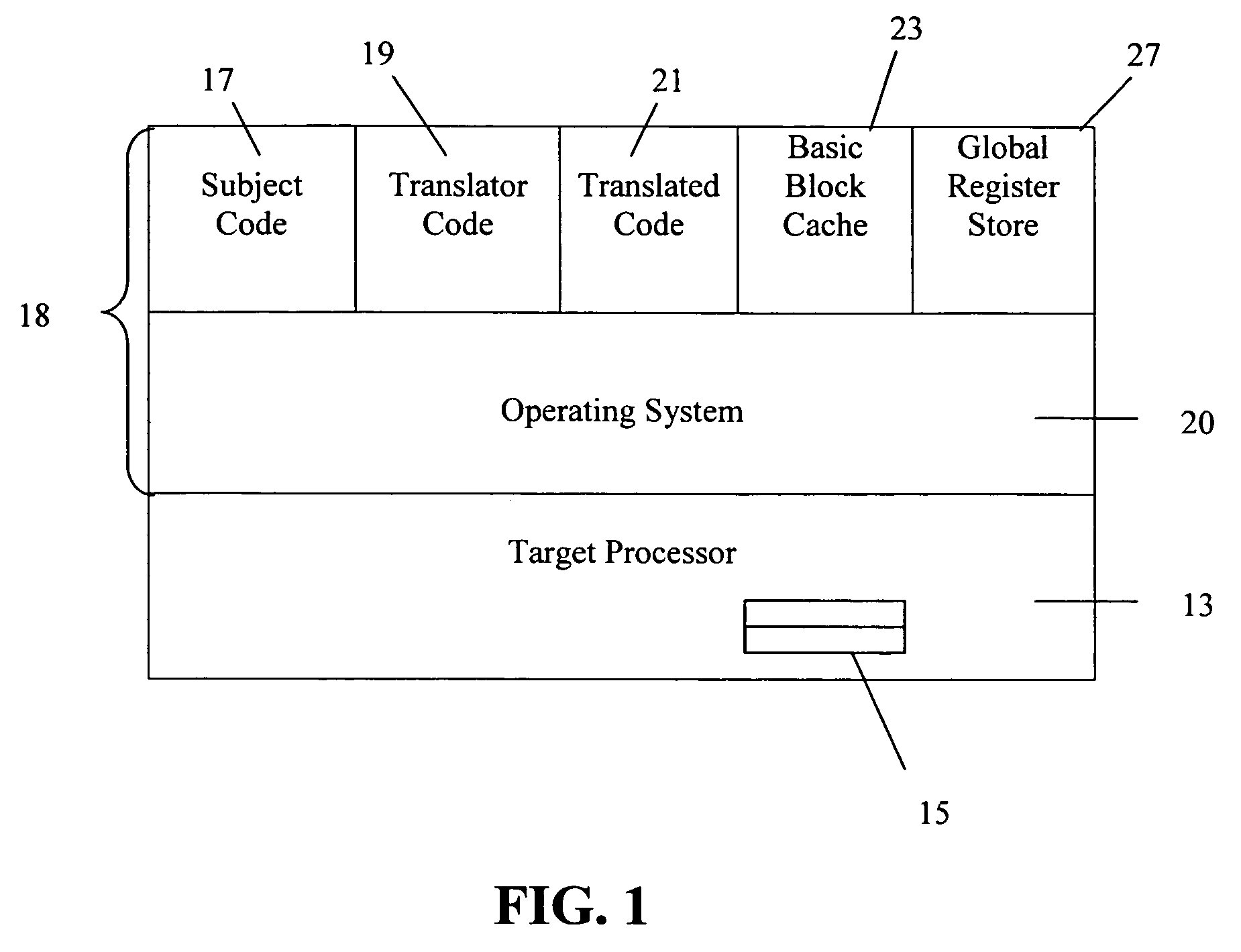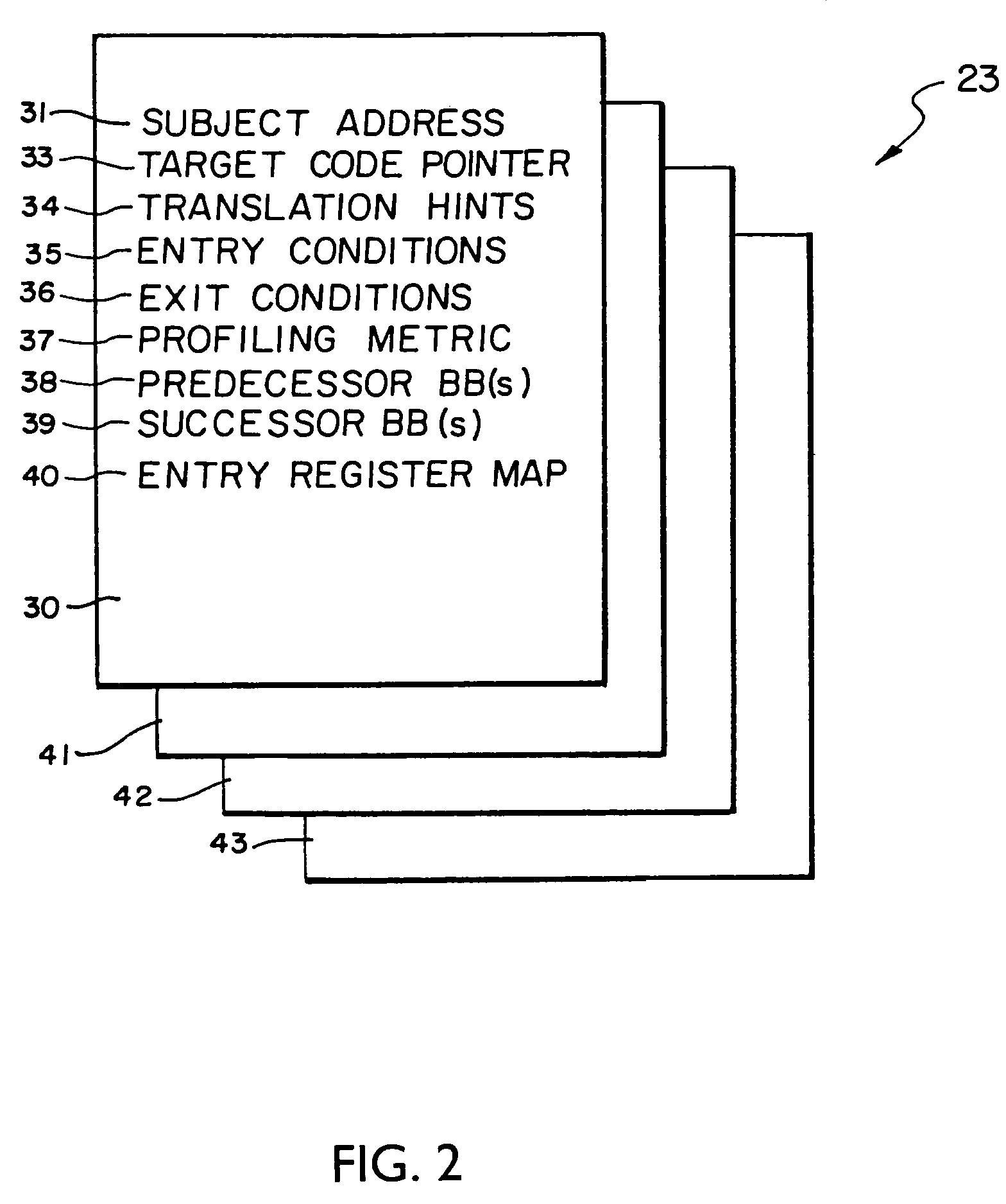Partitioning code in program code conversion
a program code and code technology, applied in the field of computer and computer software, can solve the problems of not being able to evolve in performance or market reach, unable to find and delete the target code which corresponds to a given subject address, and difficulty in modifying code that is self-modifying, etc., and achieve the effect of limiting the amount of target cod
- Summary
- Abstract
- Description
- Claims
- Application Information
AI Technical Summary
Benefits of technology
Problems solved by technology
Method used
Image
Examples
Embodiment Construction
[0023]Illustrative apparatus for implementing various novel features discussed below is shown in FIG. 1. FIG. 1 illustrates a target processor 13 including target registers 15 together with memory 18 storing a number of software components 19, 20, 21, where such memory 18 further provides a working storage for a basic block cache 23, a global register store 27, and the subject code 17 to be translated. The software components include an operating system 20, the translator code 19, and translated code 21. The translator code 19 may function, for example, as an emulator translating subject code of one ISA into translated code of another ISA or as an accelerator for translating subject code into translated code, each of the same ISA.
[0024]The translator 19, i.e., the compiled version of the source code implementing the translator, and the translated code 21, i.e., the translation of the subject code 17 produced by the translator 19, run in conjunction with the operating system 20 such ...
PUM
 Login to View More
Login to View More Abstract
Description
Claims
Application Information
 Login to View More
Login to View More - R&D
- Intellectual Property
- Life Sciences
- Materials
- Tech Scout
- Unparalleled Data Quality
- Higher Quality Content
- 60% Fewer Hallucinations
Browse by: Latest US Patents, China's latest patents, Technical Efficacy Thesaurus, Application Domain, Technology Topic, Popular Technical Reports.
© 2025 PatSnap. All rights reserved.Legal|Privacy policy|Modern Slavery Act Transparency Statement|Sitemap|About US| Contact US: help@patsnap.com



